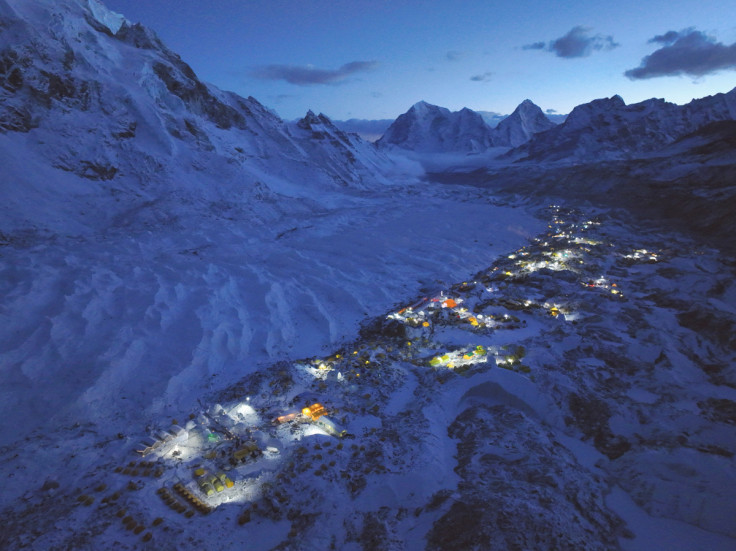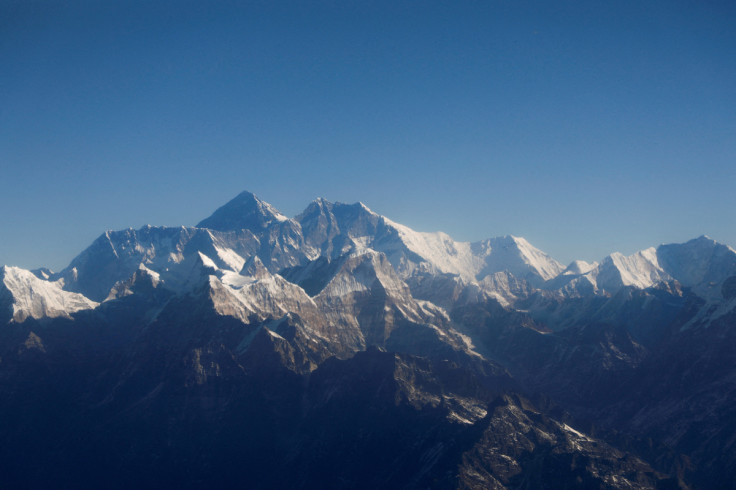70 Years Of Everest Summit: Interesting Facts To Kindle Your Fascination With Earth's Highest Point
This year marks the 70th year since the first ascent of Mt. Everest. Many have since sought to climb and conquer the highest point on the planet, and the fascination with it just persists.
The first ascent of Mt. Everest happened 70 years ago on May 29, 1953. On that day, New Zealander Edmund Hillary and Nepali Tenzing Norgay Sherpa became the first known humans to stand on the highest peak on the planet.
This historic feat was actually one that was decades in the making, as it came many years after the mountain was unveiled to the western world in 1852 during the British government's charting of India--the Great Trigonometrical Survey of the Indian subcontinent.
Since then, many more have endeavored to conquer the summit, with hundreds now climbing it every year. But mountain climber or not, there's no denying that Mt. Everest has a special place in the minds of people all over the world.
Now, 70 years after that first ascent, let's look at some interesting facts about Mt. Everest that may just stoke your fascination--and perhaps care--for the iconic peak. (Courtesy: National Geographic, The University of Montana (UMT), Britannica, Phys.org and History)
- Mount Everest is in the Himalayan mountain range, between Tibet and Nepal
- Many people have reached Mt. Everest's summit. This includes Hillary's son and one of Tenzing's sons
- It stands at about 29,032 feet (8,849 meters). The summit and upper slopes are said to be so high that the oxygen there is just a third of that at sea level. The poor oxygen conditions, along with the cold and harsh winds, hinder the development of plant or animal life at these locations
- It is called "Chomolungma" or "Qomolangma" in Sherpa and Tibetan, meaning "Mother Goddess of the World." In Nepali, it's called "Sagarmatha," which is said to have various meanings such as "peak of the sky"
- Mt. Everest's shape is that of a three-sided pyramid
- Prior to the confirmation of the Himalayas as the tallest mountain range, the Andes was believed to be the highest mountain range in the world
- The term "sherpa" tends to be used for mountain guides, but it actually refers to The Sherpa people--one of the ethnic groups, who live in the valleys of the Himalayan mountains. They are able to guide climbers because of their expansive knowledge in mountain climbing
- There were many attempts to climb Mt. Everest's summit prior to the 1953 expedition. In 1922, for instance, an expedition made it to more than 27,000 feet before an avalanche ended up killing seven Sherpas
- Veteran mountain guide, Nepalese Sherpa Kami Rita, holds the record for climbing Mt. Everest 28 times. And, the 53-year-old may not be done yet, as he has recently stated an intent to continue climbing "as long as my body allows"
- Other climbers might have beaten Hillary and Tenzing to the summit. It's believed by some that British schoolteacher George Mallory and climbing partner Andrew Irvine made it to the summit during their attempt in the 1920s before they died on the way down
- Climbing Mt. Everest is no easy business, as climbers face various dangers on the way. This includes avalanches, weather and the altitude, with the latter being the "biggest danger," according to National Geographic. In fact, the area above 26,000 feet (8,000 meters) has been dubbed the "death zone" because of the low oxygen levels at these high altitudes
- More than 300 people have reportedly died in their quest to climb Mt. Everest. However, the location makes it "impossible" to retrieve the bodies of those who have passed, so climbers tend to pass corpses as they climb the mountain
- The summit of Mt. Everest is described as a "small dome of snow" about the size of a table. It's enough for a small group of climbers to stand together. But if there are more people, they will have to wait for their turn to catch a glimpse of the view

- While Mt. Everest is the highest point on Earth from sea level, there are other mountains that are actually technically taller than it. The Mauna Kea volcano in Hawaii, for instance, is 13,796 feet above sea level, but it actually runs a total of 33,000 feet from the base, making it taller than Everest. Its base just happens to rise from the ocean floor
- Meanwhile, the peak of Mt. Chimborazo in Ecuador is actually farther from the Earth's center than Everest's summit. This makes it the highest point above the Earth's center, mainly because the Earth is not a perfect sphere
- The honor of the first ascent to the summit of Mt. Everest by a woman belongs to Japanese climber Tabei Junko, who reached the summit on May 16, 1975, while on an expedition with an all-woman team
- The record for the youngest person to reach the summit belongs to American Jordan Romero, who was 13 at the time of the climb
- On the other hand, the oldest person to ascend Everest was Japanese Miura Yūichirō, who was 80 during his third climb to Mt. Everest in 2013. His first one was when he was 70. The oldest woman to reach the summit, however, was Japanese climber Watanabe Tamae, who climbed Everest when she was 63, and again 10 years later at age 73
- With more and more people climbing Mt. Everest, there have also been concerns for its environment, such as the problem with overcrowding and litter from the climbers. A 2011 clean-up, for instance, recovered eight tons of trash like ripped tents, broken equipment and food packaging. Now, climbers are required to bring back all of their equipment
- There's also the reported problem of the Sherpa people being exploited and disrupted by foreign climbers
- Apart from the disruptions of climbers, Mt. Everest is also faced with threats brought about by climate change such as the rising temperatures, harsher weather and melting snow and glaciers
"The effects of climate change are hitting not just the fishes of Antarctica, the whales or the penguins, but it's having a direct impact on the Himalayan mountains and the people there," said Ang Tshering, a prominent Sherpa, who has been outspoken about protecting the Himalayas from the impacts of climate change, Britannica reported, citing the Associated Press.
"We don't really need to wait for the future; we are seeing the impact already," another Sherpa guide, Phurba Tenjing, added.
Mountaineering enthusiast or not, one cannot deny the importance of Mt. Everest to our planet and heritage as humans. Although many have, in some ways, "conquered" it, it remains a mighty, but precious part of the planet that people should care for.
On the 70th anniversary of the historic first ascent of Everest, may we remember what brought many to climb Everest: the spirit of exploration.

© Copyright IBTimes 2025. All rights reserved.






















